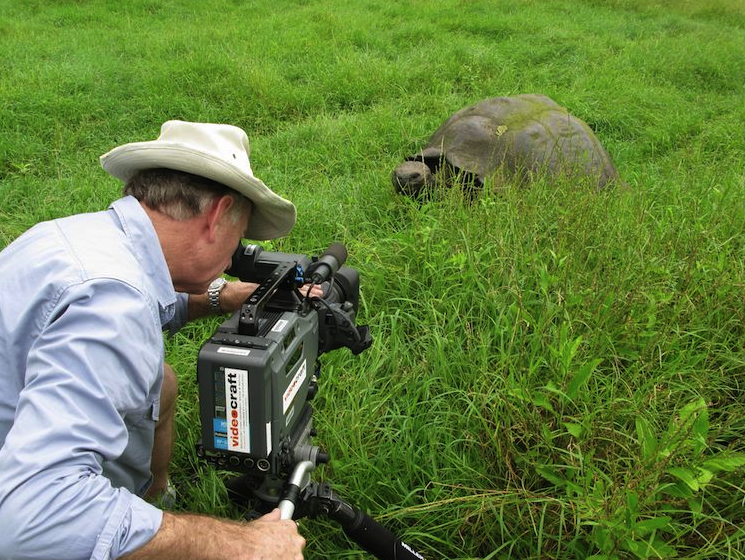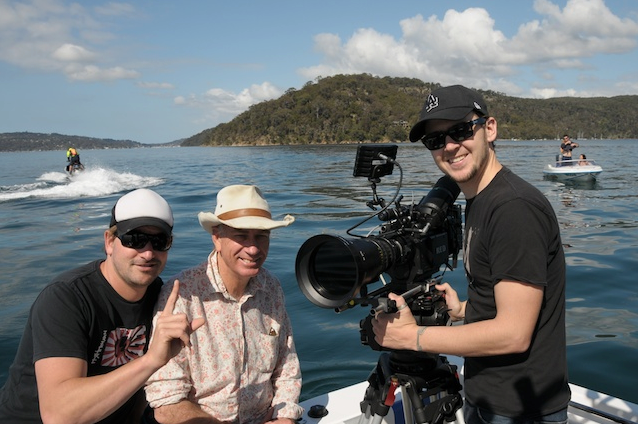
Pieter De Vries was just a child when his father brought home a Yashika 35mm camera and introduced the filmmaking bug into the family. It must have struck a major chord with the youngster, as Pieter recalls that when he was in primary school art class, he would always draw landscapes that included a tiny man standing in a corner. "He was standing behind a camera on a tripod looking at the scene. I guess that person was me - so I had a good idea about my career path early on."
De Vries first job in the film industry was working in the darkroom at the AV Department at ANU in Canberra. Not long after, he began a job as an assistant in news and current affairs for the ABC which provided invaluable on the job training. Soon De Vries was shooting everything from docos to op-ed pieces, when he discovered the person behind the camera has the power to really shape how a story was told.
"Wherever you point your camcorder, you are placing a rectangular frame around a particular part of the scene," says De Vries. "You have the choice to record some parts of the scene and to exclude unwanted parts. "Choose to include an object or a person in the frame and it becomes important to your audience. Leave it out, and for your viewers, it will never exist. You become totally responsible for what will be on the screen. The edit begins before the card or tape even leaves the camcorder."
De Vries believes this early grounding in news-making put him in a "good place" to be competent and confident in filmmaking. "The ability to quickly evaluate a scene then to work creatively at a high technical standard - this is what news filming gives you." He believes anyone wanting to enter this increasingly competitive industry should be prepared to work hard and "in any capacity" whether it be film, documentary or commercial work. "Express to everyone you can that you can that you are keen to do more. If you are asked to do something, do it and then a bit more. Get asked back for the next production and start to form a small network of colleagues and friends who are in various stages of their progress through the industry."
Having entered the industry when shooting on film was the norm, De Vries has seen enormous changes in cinematography over the years, "Digital has changed so much of what I do. The production values that I learned shooting on 16 and 35mm put me in good shape for shooting on any digital format today. I always strive to be at the front of the curve or at least as far from the blunt end of technology as possible, to be relevant in a very competitive industry. Everyone is doing this work now!"
With even compact cameras offering HD recording these days, De Vries offers the following advice to the novice shooter wanting to make the most of their new device. "Forget about the format, forget about the number of pixels, forget about the buttons, forget about Auto everything. Learn to shoot video with full manual control," says De Vries. "Learn to tell a story with your camera. To tell your story successfully, you should also be in a position to get the best image and sound that your camcorder can deliver. To some degree, corrections or exposure or white balance can be partially fixed later during the edit, but throw in unimaginative enagles, bad composition and poor sequence coverage and it is not going to work." He believes most people can pick up the skills required to be a good cameraman. "You need to see past the wide shots," explains Peiter. "Explore the way light falls, observe everything and look for shots, even as you walk around. We are observers and the best shots may be at the end og a 300mm lens."
Of course any good cinematographer will tell you that forewarned is forearmed. So do your research before a shoot and if shooting on the fly, have an arsenal of camera angels. " Most of the time, you are trying to make the best of a very unhelpful location. You have to learn to use camera angles, and lens perspectives to shoot around the problems. Aside from the great enjoyment of creating great images, the best satisfaction comes from turning the ordinary in some to something extraordinary."
For De Vries, the essential ingredients for a great shoot are: "A decent camera with full manual control, good sound, and a sense of drama and enough shots and options to make the edit a joy rather than a salvage job." To achieve this, Pieter suggests taking a short course "that will give you the confidence and the skills you need to enable you to concentrate on your story instead of the buttons on the camera."
With digital and high definition the norm these days, De Vries seldom gets to pull out his beloved film cameras. "I don't see film being used very much ow. I have my own Arriflex Super16 camera and as much as I love it, I have not used it in years. It's still able to shoot the same high quality images today as it did more than twenty six years ago. But it's pretty much all digital out there."

